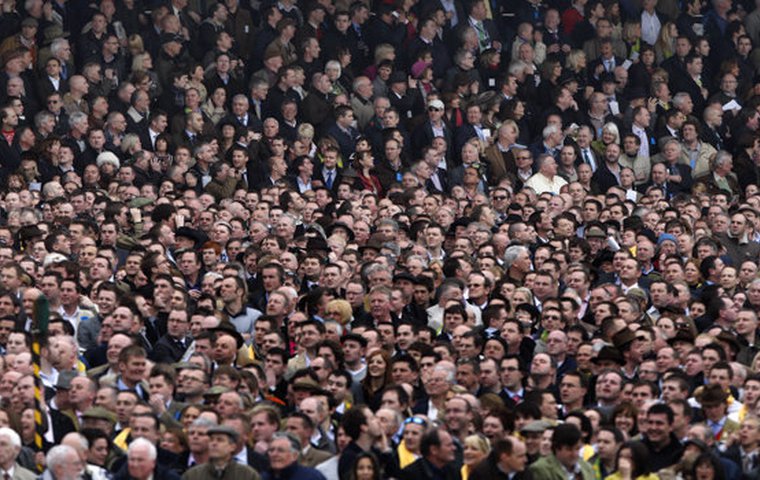
The Cheltenham Festival, the most popular – and profit-generating – horse race meeting in Europe is right around the corner. In part 3 of our series this week, Sean Magee discusses ‘National Hunt’ racing’s place in the British racing public’s heart.
Read the supplement on breeding jumpers
----------
Ever since Edmund Blake and Cornelius O’Callaghan rode their 4½-mile race across country from Buttevant in Co. Cork to the steeple of St. Leger Church in Doneraile in 1752, and unwittingly founded a new sport, jump racing has aroused strong emotions.
In Great Britain and Ireland – where the action broadly divides between races over packed-birch steeplechase fences and those over the smaller obstacles based on sheep hurdles – the sport has a passionate following.
Yet, the rest of the world has had limited involvement in the sport. In many countries – including some with an established racing tradition on the flat – it has little or no presence, and certainly nothing to challenge the predominance of jump racing in Britain and Ireland. However, in some countries there is a downright hostility to the sport on the grounds of equine welfare – which in Australia, for example, leaves a question mark over how long it can survive.
In Britain – where they hardly call jump racing National Hunt any more, thereby weakening the traditional link with the hunting field – it remains, at least by some measures, the poor relation of its swankier sibling, flat racing. The flat is where the big money resides, with much heftier prize-money up for grabs and mind-boggling rewards for those at the sharp end of the international bloodstock business.
That difference between flat and jumps is reflected in the central funding of the two codes in Britain. In 2013, the Horserace Betting Levy Board, the organisation that distributes funds collected from bookmakers, budgeted to pay out, as its annual allocation to ‘horsemen’, £18.7 million ($31.2 million) to the flat and £11 million ($18.3 million) to jumping, a ratio of 63-to-37.
But from other angles, jump racing in Britain and Ireland is in rude good health.
It attracts large volumes of betting money, while attendances at jump racing’s flagship events easily hold their own in comparison with turnout at major Flat meetings. Tens of thousands of racegoers pack every inch of available space at the showpiece fixtures such as next week’s Cheltenham Festival, the Grand National at Aintree, Liverpool, three weeks later, or the Punchestown Festival in Co. Kildare in April.
To compare the biggest annual occasion for each code in Britain in 2013, the four-day Cheltenham Festival attracted 235,125 paying racegoers, while the five-day Royal Ascot fixture brought in some 279,452 spectators, not all of whom – given the royal meeting’s secondary purpose as a fashion catwalk – had any interest in the races themselves. Thus the average at Cheltenham (58,781) comfortably exceeded the average at Royal Ascot (55,890).
Untypically, the 2013 attendance at the Cheltenham Gold Cup beat that for the Grand National, the latter race bringing in 65,626 racegoers – but whatever the exact figures, both turnouts attest to the lure of those great occasions.
Attendance at Irish meetings is not in the same league as British, but in 2013, the five-day Punchestown Festival saw the turnstiles click 101,745 times, only the second year in that fixture’s long history that the six-figure mark was exceeded.
But it is not only the biggest occasions that attract huge crowds. At quirky Cartmel, near Kendal in Cumbria, the racing is bargain-basement but the place is so magical – Lake District views, stone cottages and their gardens abutting the racecourse, the circuit so tight and intimate that the runners are always close to the spectators, and the tradition of trackside barbecues finished off with local delicacy sticky toffee pudding – that crowds of more than 20,000 are the norm.
In terms of attendances over the year, flat racing in Britain attracts an average crowd of a little more than 4,000, while the figure for jump racing is a little under that same round number, which given that the main jumping action comes in the dark, cold, and wet period between late autumn and early spring, further illustrates the good health of the jumping code.
Variety is at the heart of the appeal of jump racing for racegoers, and one of the joys of the sport is that each of the major fixtures has a mood all its own. The Cheltenham Festival is a rite of spring, with four days of hard-fought and always top-class racing played out in magnificent Cotswold surroundings before a vast and appreciative crowd, who give every winner, be they odds-on favourite or 66-to-1 outsider, a hero’s welcome into the winner’s enclosure. The intense competition between British-trained and Irish-trained horses – in 2013 Ireland won a record 14 of the 27 races – adds spice, but the meeting is essentially about friendship rather than rivalry.
---
Tomorrow: How TV, sponsorship, and one mighty racehorse ushered in a new era


